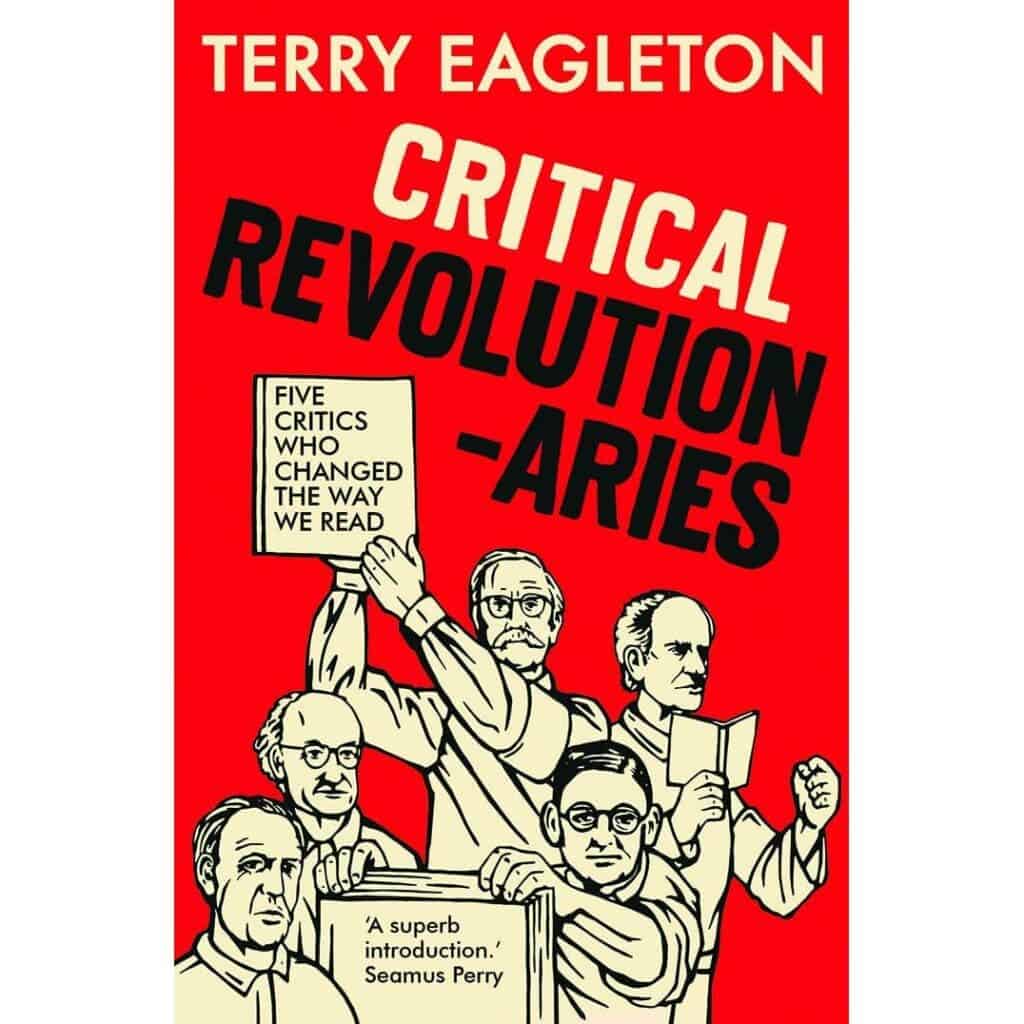Critics are often hated both by authors (for bashing their work) and by the audience (for bashing work they enjoy). After all, critics are paid to critique, so saying bad things sort of comes with the territory. But critics play an important role in our society — they help shape art and artistic movements, and artistic movements shape our society.
Writers don’t just reflect society, they sometimes define it as well. They push it forward and call on society to reflect on its values and its practices. Critical writing, in some sense, helps push writing forward. It is through critical works that our understanding of writings both past and present is finessed, and it is often from this type of work that cultural revolutions stem. When writing can be amorphous and allude to things, critical writing analyzes and defines.

by Terry Eagleton
Yale University Press // Buy on Amazon
In his book Critical Revolutionaries, Terry Eagleton probes into English literature with humor, charm, and the confidence of someone who’s been studying all year for an exam and knows everything. Eagleton is himself a critic and Distinguished Professor of English Literature at Lancaster University. He focuses on a period in which literature (and literary critique changed significantly): the period around and between the two world wars.
Critics are rarely under the spotlight themselves, which makes for an interesting experience, and from the very first chapter, the intricate link between critics and the works they are critiquing becomes very apparent. Shakespeare has been read and analyzed thousands of times over the centuries, but it’s still possible to find new meaning in his work or to look at it through a different lens as our society changes.
Of course, one lens to view these things through considers that the five critics discussed in this book (as well as the majority of literature discussed) are white men — though this speaks more to the social shortcomings of the early and mid-20th century than to the book itself. Eagleton doesn’t shy away from addressing these shortcomings and tackles thorny topics in his commentary with fluency.
Eagleton looks at five literary figures that are no longer at the forefront of literature, but still have a lot of impact in today’s world. TS Eliot, IA Richards, William Empson, FR Leavis and Raymond Williams are portrayed in this book — all part of the Cambridge intellectual elite, but in wildly different ways.
Whereas TS Eliot was an accomplished writer (he was awarded the 1948 Nobel Prize for Literature) and a well-known religious conservative, IA Richards began his career without any formal training in literature, and yet pioneered a new style of literary critique. For the liberal Richards, all language is metaphor modeled through words and grammar. Richards was an excellent teacher, but was, at times, frustrated by his students’ inability to grasp the subtleties associated with fine works of literature. But one student who did excel at this was William Empson. Empson’s seminal work, Seven Types of Ambiguity, was written when Empson was not yet 22 and it made him a sort of rockstar in the literary world. But then, disaster struck.
Empson was caught in flagrante delicto with a woman by a servant who also saw condoms in Empson’s room — which was strictly forbidden in Cambridge at the time. Empson taught in Japan and China for some time. He was brilliant, as Eagleton explains, but he was also a drunk and once hit on a Japanese male taxi driver, arguing that he couldn’t “tell Japanese men and women apart.” This makes it all the more curious that one of Empson’s best friends was TS Eliot, whose values were often diametrically opposite. From there, we jump to FR Leavis — another critic whose values clashed with those of Empson. Leavis and Empson hated each other and made no secret of it.
Leavis’ supporters say he introduced a “seriousness” to literary critique, while his detractors say he cozied up to misogynistic, elitist, and even racist ideas. But nevertheless, Eagleton appreciates Leavis’ contribution to criticism. Perhaps this is where Critical Revolutionaries shines most: it gives praise without allowing the praise the eclipse the shortcomings.
Lastly, the book moves on to Raymond Williams, a Welsh writer whose work was influential in Marxist critique of culture and arts. Williams’ work laid the foundations of cultural studies and cultural materialism. Williams, especially later in his life, had a reputation for being dogmatic, belligerent and paranoid — but yet again, Eagleton highlights his literary contribution.
In fact, throughout the book, Eagleton is able to look beyond the complex personalities of these writers and zoom in on their influential work. Sprinkled with anecdotes and quirky stories, Critical Revolutionaries does just what it says: it sheds light on people whose critique was revolutionary. Eagleton’s goal appears to be neither to exaggerate nor to diminish, but rather to give respect where respect is due, without needless shine and sparkle.
For a reader who’s non-savvy in literature (and an absolute newbie to criticism), there’s still a lot to learn and it’s actually a fun read. I found myself constantly bookmarking things for later reference and wanting to go deeper; while I likely won’t be buying the works of the five critics to devour everything they’ve done, this worked as a good introduction and I will be looking at literary critique (and critics) with new eyes.
For those looking for an easy entrance into the deeper parts of literature, Critical Revolutionaries is a good place to start. I suspect that even those well-versed in will have something to take home here. Ultimately, for most, it will be an enjoyable read sprinkled with lessons and knowledge spread masterfully throughout.


